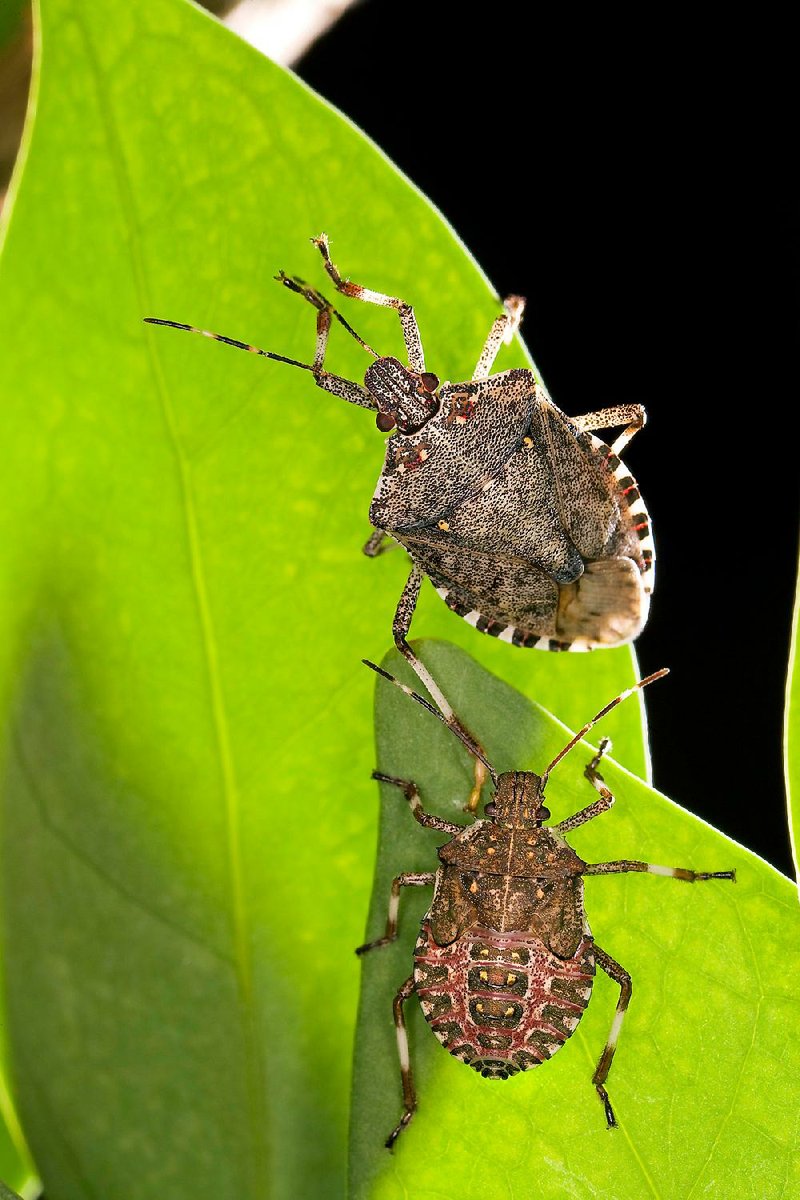Q: What are stink bugs, why do they stink? Where did they come from?
A: Americans are seeing more and more brown marmorated stink bugs (Halyomorpha halys), a true bug in the order Hemiptera, with a proboscis adapted for piercing and sucking plants. But there are native stink bugs as well, and some are beneficial insects.
The brown marmorated stinkers are fairly recent invaders of the United States, presumably as stowaways in cargo from China, and were identified first in Pennsylvania in 1998, according to research sponsored by the U.S. Department of Agriculture.
These plant eaters have become major crop pests in mid-Atlantic states, as they were in their native China, Japan, South Korea and Taiwan. They are best known for the appalling odor their scent glands emit when they are under pressure, presumably to ward off predators.
As for what produces the smell, the exact chemical constituents are not fully known, but research in a related species, Cosmopepla bimaculata, found a complicated cocktail of at least 11 volatile compounds, including two aldehydes, two esters, five alkanes and two unidentified compounds.
The research also found that these bugs were relatively reluctant to use their chemical weapon, as it was costly in terms of energy to produce it.
Native stink bugs, which are not crop pests, are similar in appearance but often have a yellow-green underside, whereas the invaders' underside is brown.
In Arkansas, the University of Arkansas Cooperative Extension Service website uaex.edu has brochures on the imported stink bugs as well as an identification guide to native stinkers. It notes that adults of the invasive species could easily be confused with two native species, the brown stink bug and spined soldier bug, which is a beneficial bug.
"Watch for brown marmorated stink bugs so that we can delay their establishment in Arkansas as long as possible," according to the brochure. "Pathways of potential introduction include hitchhiking in shipped boxes from infested states. Entomologists need to document the expanding range of this pest."
The brochure directs people who find these bugs to report them to their county extension agent.
It has been reported that some homegrown organisms, like the yellow garden spider, some species of preying mantis and the wheel bug, Arilus cristatus, are adapting to preying on the invaders. Researchers are even considering importing a wasp that helps control the stink bugs in their original range.
Celia Storey added information to this report.
ActiveStyle on 06/22/2015
